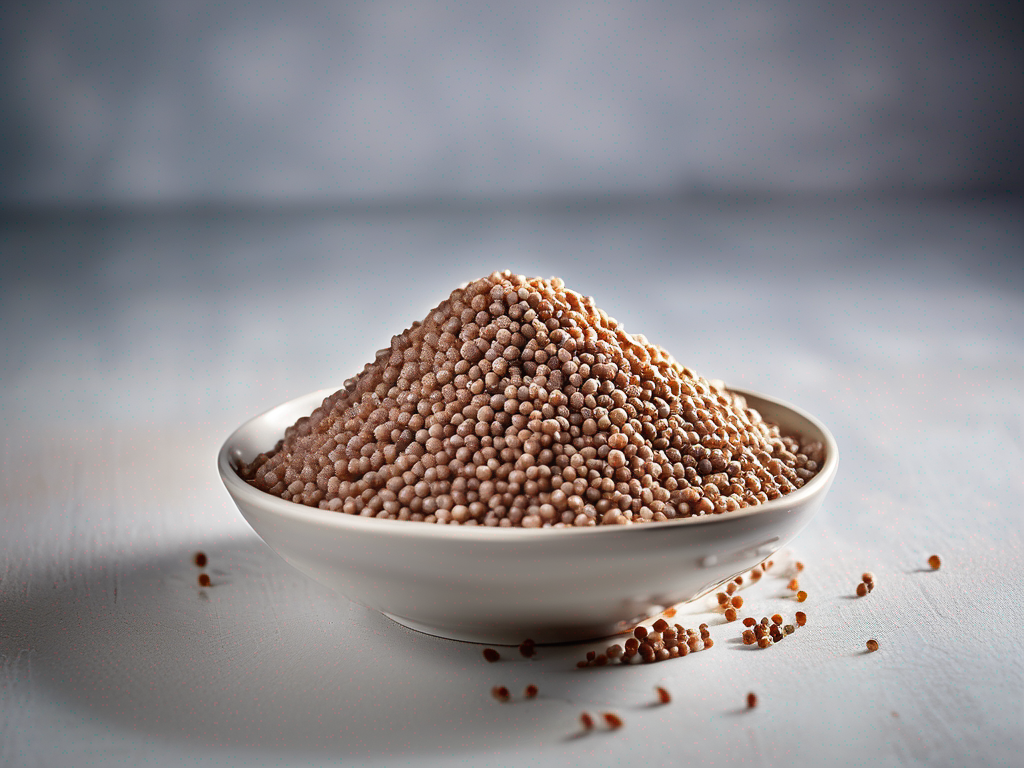
Reviving Old Buckwheat: Tips for Cooking and Storage
Get Your Free Food Safety Cheat Sheet
30 most common foods with instant answers. Print it and stick it on your fridge—completely free!
Reviving Old Buckwheat: Tips for Cooking and Storage
Buckwheat is a versatile and nutritious grain that has been consumed for centuries in various cultures around the world. It is known for its earthy flavor and health benefits, making it a popular choice for both sweet and savory dishes. However, if you have old buckwheat sitting in your pantry, you may be wondering if it's still safe to eat and how to revive it for cooking purposes. In this comprehensive guide, we will explore the best practices for reviving old buckwheat, cooking it safely, and storing it properly. (Buckwheat)
Understanding Buckwheat
Before we delve into reviving old buckwheat, let's first understand what buckwheat is. Buckwheat is not a true cereal grain but rather a seed that is related to rhubarb and sorrel. It is gluten-free and rich in nutrients such as fiber, protein, and antioxidants. Buckwheat is a versatile ingredient that can be used in various dishes, including pancakes, porridge, salads, and soups.
Benefits of Buckwheat
- Rich in nutrients like fiber, protein, and antioxidants
- Gluten-free, making it a suitable option for individuals with gluten sensitivities
- Helps in managing blood sugar levels and promoting heart health
- Versatile ingredient that can be used in a variety of dishes
Reviving Old Buckwheat
If you have old buckwheat that has been sitting in your pantry for a while, you may notice that it has lost its freshness and may have become stale. Here are some tips for reviving old buckwheat:
1. Check for Signs of Spoilage
Before reviving old buckwheat, inspect it for any signs of spoilage such as mold, unusual odors, or insect infestations. If you notice any of these signs, it is best to discard the buckwheat to avoid any health risks.
2. Dry Roasting Method
One effective way to revive old buckwheat is by dry roasting it. Heat a skillet over medium heat and add the old buckwheat grains. Stir constantly for a few minutes until the buckwheat becomes fragrant and slightly toasted. This process helps to revive the flavor of the buckwheat and can also improve its texture.
3. Soaking Method
Another method to revive old buckwheat is by soaking it in water. Place the old buckwheat in a bowl and cover it with water. Let it soak for a few hours or overnight. Drain the water and rinse the buckwheat before using it in your recipes. This method can help rehydrate the buckwheat and make it more tender when cooked.
4. Grinding Method
If your old buckwheat is too hard to cook as whole grains, you can grind it into buckwheat flour using a blender or food processor. This way, you can still use the buckwheat in recipes like pancakes, muffins, or bread.
Cooking and Storing Buckwheat
Now that you have successfully revived your old buckwheat, it's time to cook and store it properly to maintain its freshness and flavor.
Cooking Tips
- Use a ratio of 1:2 (1 part buckwheat to 2 parts water) when cooking buckwheat on the stovetop.
- Bring the water to a boil, add the buckwheat, reduce the heat, cover, and simmer for about 15-20 minutes or until the water is absorbed.
- Fluff the cooked buckwheat with a fork and let it rest for a few minutes before serving.
Storing Tips
- Store buckwheat in an airtight container in a cool, dry place away from sunlight.
- Keep the buckwheat away from strong-smelling foods as it can absorb odors easily.
- If storing for an extended period, consider keeping the buckwheat in the refrigerator or freezer to maintain its freshness.
Conclusion
Reviving old buckwheat for cooking purposes is a simple process that can help you make the most out of this nutritious and versatile ingredient. By following the tips mentioned in this guide, you can ensure that your buckwheat stays fresh, flavorful, and safe to consume. Experiment with different recipes and enjoy the earthy goodness of buckwheat in your meals. Learn more about buckwheat here and start incorporating this nutritious grain into your culinary repertoire. (Buckwheat)
Related Posts
Here are some other articles you might find helpful:
Authoritative Food Safety References
These agencies and university labs inform every tip and health precaution we publish.
USDA FoodKeeper – Cold Storage Guidelines
Official refrigerator, freezer, and pantry timelines maintained by the U.S. Department of Agriculture.
Visit USDA FoodKeeperFDA Produce Safety Rule & Grower Guidance
Field-to-fridge handling practices that prevent contamination of fruits, vegetables, and leafy greens.
Visit FDA Produce SafetyCDC Foodborne Illness Prevention Hub
Surveillance-backed guidance on pathogens, symptoms, and steps to reduce foodborne illness risk.
Visit CDC Food SafetyUC Davis Postharvest Technology Center
University research detailing optimal storage atmospheres for produce after harvest.
Visit UC Davis PostharvestPenn State Extension – Home Food Preservation & Safety
Peer-reviewed extension bulletins on safe canning, chilling, and reheating practices.
Visit Penn State ExtensionGet Your Free Food Safety Cheat Sheet
30 most common foods with instant answers. Print it and stick it on your fridge—completely free! Want more? Upgrade to the complete guide with 70+ foods.
Scan your food directly and get instant safety info using our AI-powered camera feature.